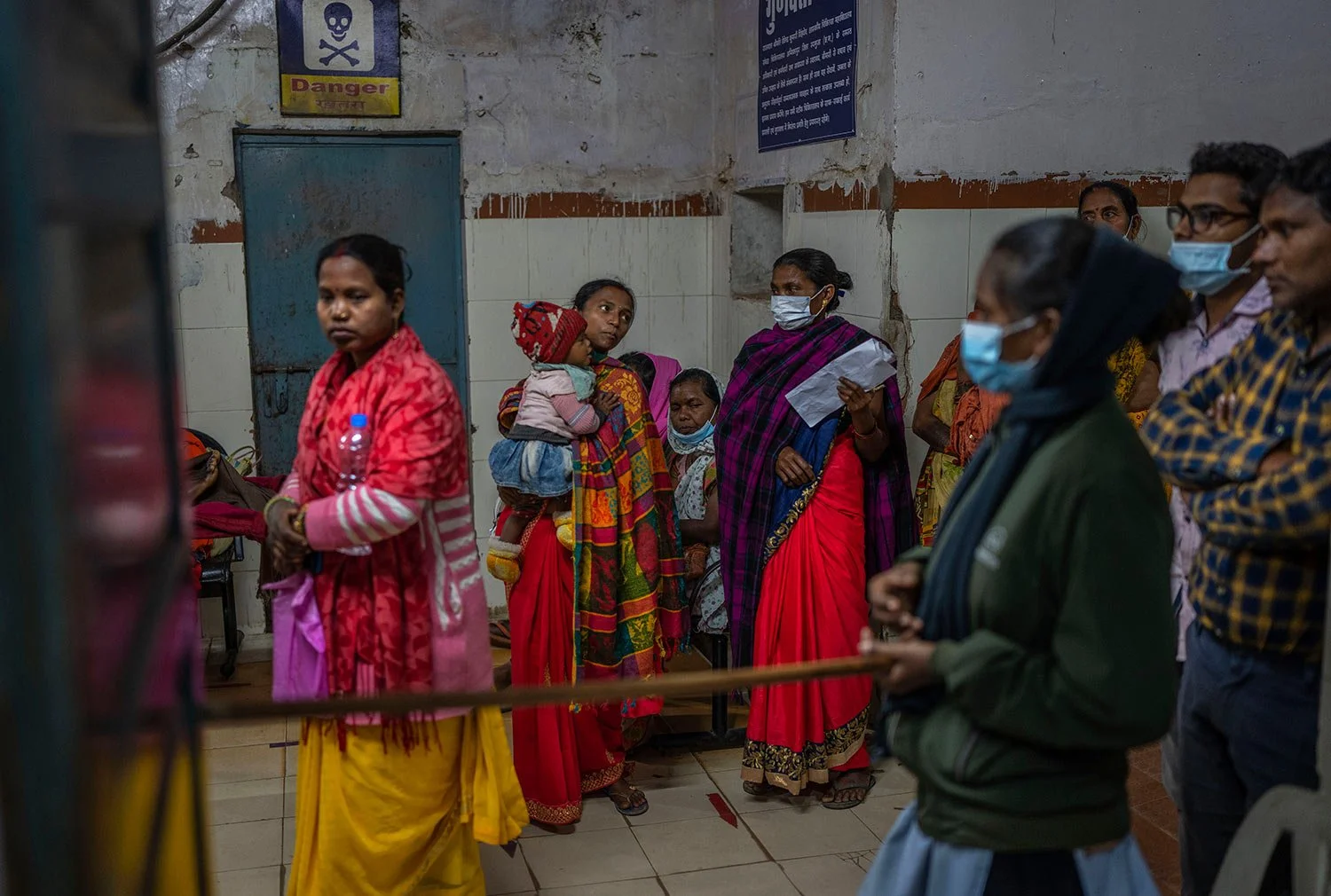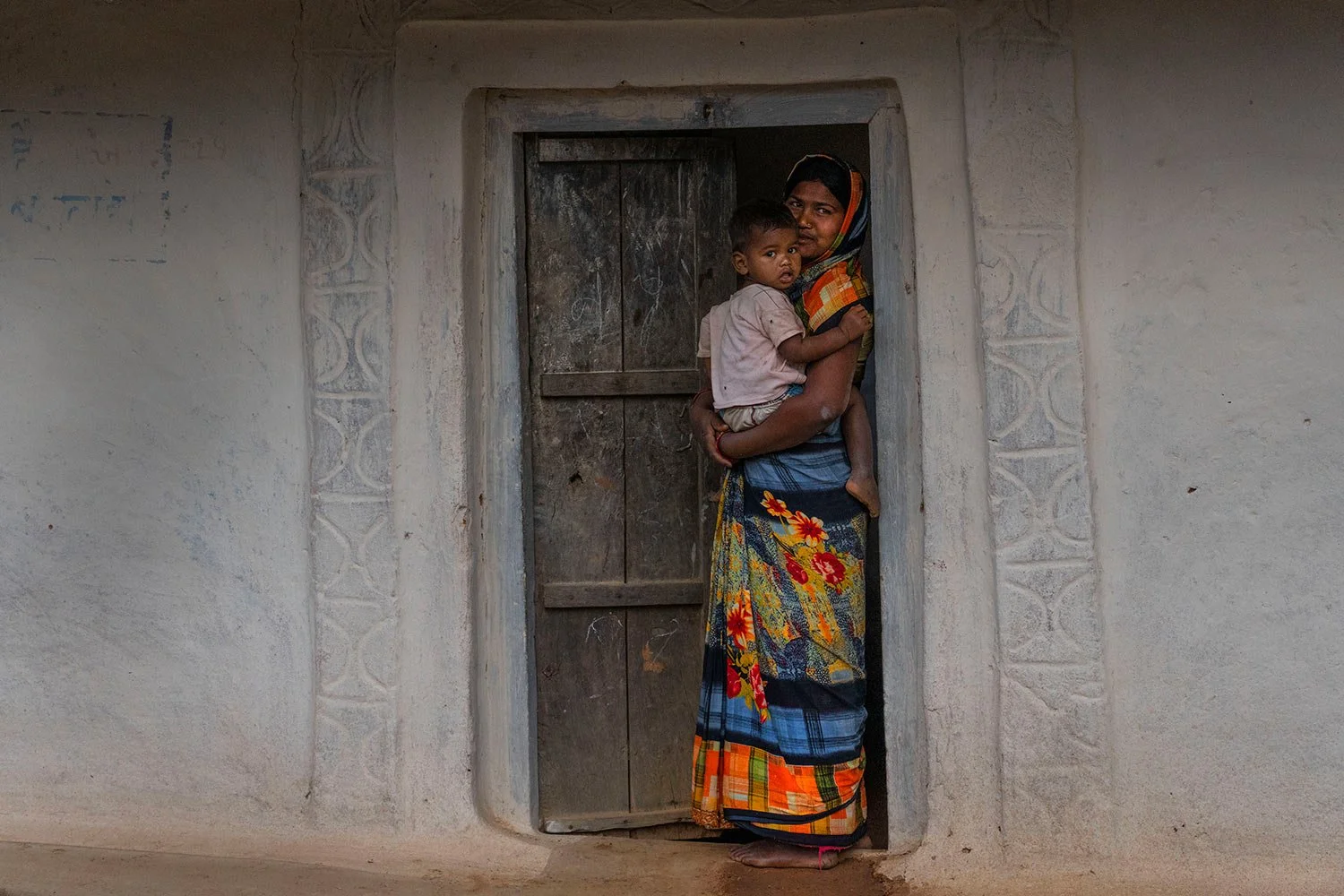India's stretched health care fails millions in rural areas

By Aniruddha Ghosal | Photos Rafiq Maqbool
Poonam Gond is learning to describe her pain by numbers.
Zero means no pain and 10 is agony. Gond was at seven late last month. “I have never known zero pain,” she said, sitting in the plastic chair where she spends most of her days.
The 19-year-old has sickle cell disease, a genetic blood disorder. Her medicine ran out weeks ago.
Gond’s social worker, Geeta Aayam, nods as she bustles around Gond. She has the same disease — but, with better care, leads a very different life.
Hundreds of millions of rural Indians struggle to access care for a simple reason: The country just doesn’t have enough medical facilities.
Sickle cell patient Poonam Gond, 19, walks out of her house in Haripur village in Ambikapur district, Chhattisgarh state, India, Monday, March 20, 2023. (AP Photo/Rafiq Maqbool)
India’s population has quadrupled since its independence in 1947, and an already fragile medical system has been stretched too thin: In the country’s vast countryside, health centers are rare, understaffed and sometimes run out of essential medicines. For hundreds of millions of people, basic health care means a daunting journey to a distant government-run hospital.
Such inequities aren’t unique to India, but the sheer scale of its population — it will soon overtake China, making it the world’s largest country — widens these gaps. Factors ranging from identity to income have cascading effects on health care, but distance is often how inequities manifest.
What that means for people with chronic problems like sickle cell disease is that small differences in luck can be life-changing.
Nandini Kanwar, center, a nurse with the nonprofit Sangwari, takes a blood sample from 17-year-old Sahiba Taj Khan, left, who has sickle cell disease, as hospital official Biswajoy Kumar Singh, right, checks another sample during their visit to a remote village to screen residents for sickle cell disease in Ambikapur district, Chhattisgarh state, India, Wednesday, March 22, 2023. (AP Photo/Rafiq Maqbool)
Gond’s sickle cell disease was diagnosed late, and she often doesn’t have access to medicine that keeps the illness under control and reduces her pain. Because of the pain, she can’t work, and that further reduces her access to care.
Like Gond, Aayam was born into an Indigenous farming family in central India’s Chhattisgarh state, but before her pain began she finished her studies and began working for the public health nonprofit Sangwari in the city. Older, educated and working alongside doctors, she was diagnosed promptly and received treatment. That allowed her to keep the disease under control, hold a job and get consistent care.
India’s rural health system has weakened from neglect in past decades, and as health workers gravitated towards better-paying jobs in big cities. India spent only 3.01% of its gross domestic product on health in 2019, less than China’s 5.3% and even neighboring Nepal’s 4.45%, according to the World Bank.
Kailash Kaunsa, who has sickle cell disease, rests in bed at his home in Kalyanpur village in Ambikapur district, Chhattisgarh state, India, Tuesday, March 21, 2023. (AP Photo/Rafiq Maqbool)
In Chhattisgarh, which is among India's poorest states and also has a significant Indigenous population, there’s about one doctor for every 16,000 people. By comparison, the urban capital of New Delhi has one doctor for around every 300 people.
“Poor people get poor health care,” said Yogesh Jain, a public health specialist at Sangwari, which promotes health care access in rural India.
Gond, 19, saw her life go off track early. Her mother died because of sickle cell disease when she was 6, and the young woman dropped out of school at 14 to help at home. She needed frequent blood transfusions to manage the illness, forcing her to undertake the difficult journey to the district hospital.
But as her pain worsened, she couldn’t even get out of bed. In 2021, she needed surgery when bone tissue in her hip died, starved of oxygen. She can no longer walk, sit or sleep without pain. Most days, she pulls the plastic chair where she spends hours to the doorway and looks out as the world passes her by.
Her former schoolmates are in college now and she wishes was with them.
“All I feel is anger. It eats away at my insides,” she said.
Raja Babu, 3, second from right, who has sickle cell disease travels with his family in a three wheeler after visiting a hospital for treatment in Ambikapur district, Chhattisgarh state, India, Monday, March 20, 2023. (AP Photo/Rafiq Maqbool)
Dr. Mohammad Shagil, left, examines Ravi Shankar, a sickle cell patient at a government hospital in Ambikapur in the Indian state of Chhattisgarh, India, Tuesday, March 21, 2023. (AP Photo/Rafiq Maqbool)
Hydroxyurea, a pain-relieving drug that India approved in 2021 and provides for free, allows many patients to lead relatively normal lives, but Gond’s medicine ran out weeks ago and pharmacists in her village in Surguja district don’t have any.
When Gond gets on hydroxyurea for a few weeks, the pain gradually recedes, and she can move around more. But it often runs out, and the sprawling district has only one large government hospital for 3 million, mostly rural, inhabitants. To get medicine from the hospital, Gond’s father would need to borrow a motorbike and skip a day’s work every month — a significant sacrifice for the family, which lives on less than a dollar a day.
When things get very bad, Gond calls Aayam, the social worker, who drives over with the drugs. But there are thousands of patients who can’t access health centers and Aayam can’t do this often.
Social worker Geeta Aayam, left, gives free medicine to Poonam Gond during her visit to Gond’s house in Haripur village in Ambikapur district, Chhattisgarh state, India, Monday, March 20, 2023. (AP Photo/Rafiq Maqbool)
Sonu Devandan, a sickle cell patient, lies on a bed at a government hospital in Ambikapur district, Chhattisgarh state, India, Monday, March 20, 2023. (AP Photo/Rafiq Maqbool)
Kailash Kaunsa, who has sickle cell disease, shows his medicine at his home in Kalyanpur village, in Ambikapur district, Chhattisgarh state, India, Tuesday, March 21, 2023. (AP Photo/Rafiq Maqbool)
Sickle cell is an inherited disease in which misshapen red blood cells can’t properly carry oxygen throughout the body. It can cause severe pain and organ damage and is commonly found in people whose families came from Africa, India, Latin America and parts of the Mediterranean.
In India, the disease is widely, but inaccurately, seen as only affecting the Indigenous population. Like many diseases associated with marginalized communities, it has long been neglected. India approved hydroxyurea for sickle cell disease two decades after the U.S.
The government's current strategy is to eliminate the disease by 2047. The plan is to screen 70 million at-risk people by 2025 to detect the disease early, while counseling those who carry the gene about the risks of marrying each other. But as of April it has only screened 2% of its 2023 target of 10 million people.
Raghubeer Nagesh, with his son Sujeet Nagesh, 13, who has Sickle cell disease, leaves on a motorcycle after a medical checkup at a government hospital in Ambikapur district, Chhattisgarh state, India, Tuesday, March 21, 2023. (AP Photo/Rafiq Maqbool)
Patients wait for doctors in a government run hospital in Ambikapur district, Chhattisgarh state, India, Tuesday, March 21, 2023. (AP Photo/Rafiq Maqbool)
Experts warned that similar efforts have failed in the past. Instead, Jain, the public health specialist, argued for strengthening health systems so they can find, diagnose and treat the sick. If patients can't get to the hospital, he asked, “can the health system to go the people?”
Some are trying. Bishwajay Kumar Singh, an official at the Ambikapur hospital, and Nandini Kanwar, a nurse with Sangwari, traveled three hours through forested hills to Dumardih village at the edge of the Surguja district.
Raghubeer Nagesh, a farmer, had brought his son Sujeet, 13, to the hospital the day before. The boy was losing weight steadily, and then one afternoon his leg felt like it was burning. Tests confirmed that he had sickle cell disease. His worried father told hospital officials that several other children in the village had similar symptoms.
In Dumaridh, Singh and Kanwar visited houses where people had symptoms, including one where a worried mother asked if the disease would stunt her child's growth and another where a young man who plays music at weddings found out that his pain wasn't just fatigue.
A woman and her child stand in a door as health workers test for sickle cell disease in Haripur village in Ambikapur district, Chhattisgarh state, India, Monday, March 20, 2023. (AP Photo/Rafiq Maqbool)
Nandini Kanwar, third from left, a nurse with the nonprofit Sangwari, takes a blood sample from Sanjay Marawi, who has sickle cell disease, as hospital official Biswajoy Kumar Singh, second from left, check another sample during a visit to a remote village to screen sickle cell patients, in Ambikapur district, Chhattisgarh state, Wednesday, March 22, 2023. (AP Photo/Rafiq Maqbool)
Biswajoy Kumar Singh, a hospital official, arrives in a remote village to screen sickle cell patients at Chandragad village in Ambikapur in the Indian state of Chhattisgarh Wednesday, March 22, 2023. (AP Photo/Rafiq Maqbool)
A villager sits on the shore of a lake in Haripur village in Ambikapur district, Chhattisgarh state, India, Monday, March 20, 2023. (AP Photo/Rafiq Maqbool)
Efforts like this are dwarfed by the sheer scale of India's population. Dumardih has a few thousand residents, making it a tiny village by Indian standards. But the two can only visit four or five homes in a single trip, testing about a dozen people with symptoms.
Again and again, Singh and Kanwar were asked the same question: Is there really no cure? Faces fell as painful calculations were made. A disease that can’t be cured means a lifelong reliance on an unreliable health system, personal expenses and sacrifices.
Kanwar said they would help make the medicines available nearby, but taking it daily was essential.
“Then, life can go on,” she said.
A woman chases away stray dogs as patients wait for their turn to see doctors at a government run hospital in Ambikapur district, Chhattisgarh state, India, Tuesday, March 21, 2023. (AP Photo/Rafiq Maqbool)
Sickle cell patient Sonu Devandan, left, lies on a bed at a government hospital in Ambikapur district, Chhattisgarh state, India, Monday, March 20, 2023. (AP Photo/Rafiq Maqbool)
Patients wait for doctors in a government run hospital in Ambikapur district, Chhattisgarh state, India, Tuesday, March 21, 2023. (AP Photo/Rafiq Maqbool)
An Indigenous woman holds her son as she walks past a cow's skull hanging off a stick in a field in Chandragad village, in Ambikapur district, Chhattisgarh state, Wednesday, March 22, 2023. (AP Photo/Rafiq Maqbool)
___
EDITOR’S NOTE: This story is part of an ongoing series exploring what it means for the 1.4 billion inhabitants of India to live in what is now the world’s most populated country.
___
Text from AP News story, India's stretched health care fails millions in rural areas, by Aniruddha Ghosal
Photos by Rafiq Maqbool







